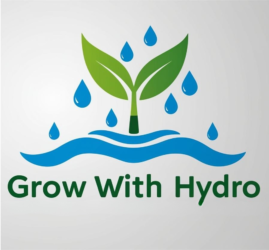Getting your hydroponic system all spick-and-span might seem a little daunting at first, but with the right prep, you’ll be on top of it in no time. It all starts with gathering the right safety gear and tools. Gloves, goggles, and maybe even a mask if you’re working with stronger cleaning agents. Trust me, safety first makes everything else way easier.
Once you’ve geared up, nailing down a regular cleaning routine is your next power move. It’s about setting up a schedule that keeps your plants happy and your system ticking like clockwork. Think of it like preventative care. Cleaning before things go south can really save you a headache.
Of course, it’s not one-size-fits-all here. Different hydroponic systems have their quirks and their specific cleaning needs. Whether you’re rocking a deep water culture setup or something more like a nutrient film technique, knowing what your system needs is key. Taking a minute to get into the nitty-gritty of your setup pays off big time down the road.
Step-by-Step Guide to Effortlessly Clean Your System
Tackling the cleaning process begins with safely draining and dismantling your hydroponic system. First things first, make sure everything’s unplugged and powered down to avoid any surprises. Taking your time here is worth it because rushing could lead to damaging components. I personally have had an experience where I had an aquarium heater keeping my nutrient solution warm and forgot to unplug during a water change The heater failed in a somewhat violent manner. This step is important.
When it comes to scrubbing plant holders, tubes, and the reservoir, becoming a bit of a cleaning ninja is the goal. Grab some gentle brushes or sponges and get into all those nooks and crannies. Being thorough now means fewer problems later, plus it really boosts your plants’ health.
Choosing the right cleaning agents is where we zero in on keeping things friendly for your plants and the environment. Eco-friendly cleaning agents often work just as well as the commercial ones without leaving harsh residues. If you’re going the commercial route, be extra sure to rinse everything well post-cleaning to keep unwanted chemicals out of your nutrient mix.
Troubleshooting Common Cleaning Challenges
Every hydroponic grower faces some hiccups now and then. One biggie is algae and mineral buildup. They’re sneaky, but they don’t stand a chance if you catch them early. Regular inspections do wonders here. Spot something green or white creeping on your surfaces? Grab a soft brush and some diluted vinegar or hydrogen peroxide. They can work wonders without too much elbow grease.
Another issue that might pop up is dealing with unwanted odors and discoloration. No one likes funky smells, and they’re often a sign something’s amiss. Odors usually signal bacteria or organic matter breaking down. Giving your reservoir a good scrub and checking your water quality goes a long way.
Stay ahead of the game by adopting some preventive maintenance practices. This could be as simple as using light-proof materials to minimize algae growth or checking your nutrient solution concentration regularly to catch issues before they start. A little bit of effort upfront saves a ton of trouble later.
Maintaining a Clean Hydroponic Environment Long-Term
After getting your hydroponic system all clean and tidy, keeping it that way is the name of the game. Regular, simple habits can save you heaps of time and hassle later. Keeping an eye on things daily and tweaking your routine only when necessary ensures everything stays optimal.
Monitoring your system’s environment is crucial. This isn’t just about keeping up with water and nutrient levels but also about maintaining the right humidity and temperature. Use tools like hygrometers and thermostats to help keep tabs, so any potential problem is caught before it becomes an issue.
It’s worth considering investing in a few housekeeping tools specifically for your setup. A dedicated brush set or a portable UV sterilizer can make periodic clean-ups far less daunting. By being proactive with these small tools, you’ll extend the life of your equipment and keep it functioning smoothly.
Lastly, creating a log to track your cleaning schedule and observations can make a significant difference. It helps spot patterns and issues before they escalate and ensures no part of the system gets overlooked too long. Plus, if anything is off, you’ll have a record to reference, making problem-solving way quicker.
